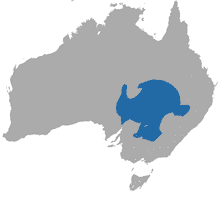Rank Species | Phylum Chordata Genus Planigale Higher classification Planigale | |
 | ||
Similar Planigale, Narrow‑nosed planigale, Southern ningaui, Long‑tailed planigale, Marsupial | ||
The paucident planigale (Planigale gilesi), also known as Giles' planigale, is a very small species of carnivorous marsupial of the family Dasyuridae.
Contents
Taxonomy
The paucident planigale was not formally described until 1972, when it was named Planigale gilesi in honour of the explorer Ernest Giles, who explored Australia's deserts, including this species' habitat. It is one of five members of the Planigale genus.
Description
The paucident (from Latin pauci ("few") + dentēs ("teeth")) planigale differs from other planigales in its plain grey colouring and its two premolars in each tooth row (all other planigales have three). It feeds on many small creatures, including beetles, locusts, spiders or other arthropods, and even occasionally feeds on small lizards or mammals. The paucident planigale kills small prey with quick bites. Although it is believed that fewer than twenty percent of individuals survive for more than two years, captive animals have reached five years of age.
Distribution and habitat
The paucident planigale is found in arid inland areas from Lake Eyre, South Australia, to Moree, New South Wales, and from Mildura, Victoria, to the southwestern Northern Territory. It is often found in areas with cracked clay soils, including floodplains and interdune areas among sandhills, the cracks providing shelter from adverse weather conditions.
